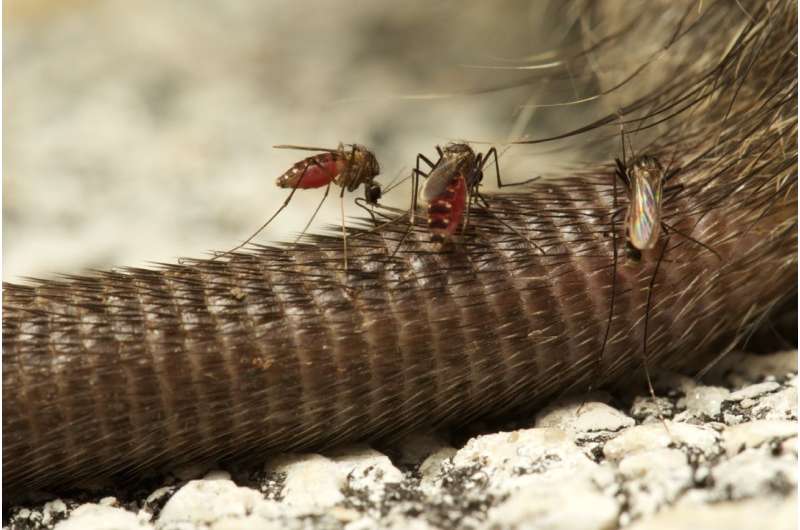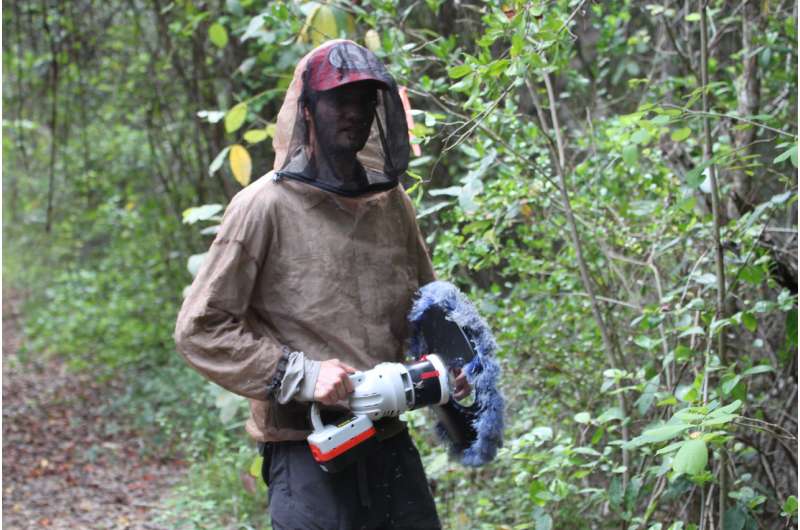How declining mammal populations in the Florida Everglades are linked to the invasive Burmese python

New research published in Biology Letters looks at how declining mammal populations in the Florida Everglades is linked to the invasive Burmese python. We talked to one of the authors, Nathan Burkett-Cadena from the University of Florida, about his research and the repercussions of what he and his co-authors found.
Tell us about yourself and your research
I'm an Assistant Professor at the Florida Medical Entomology Laboratory, a Research and Extension Campus of the University of Florida. My lab focuses on understanding why each mosquito species bites the animals that it does, when and where it does, and how that interaction drives the transmission of mosquito-borne viruses.
What is your article about?
This article is about how a vector mosquito, Culex cedecei, has shifted from feeding upon a variety of mammals to feeding almost exclusively on certain rodents in parts of the Everglades where the invasive Burmese python is established. The Burmese python is implicated in decimating populations of rabbits, deer, raccoons and other mammals. Rodents are the only mammals that have persisted in python-established areas, probably because of their high natural densities and explosive reproduction. Now that rabbits, raccoons and deer are all but eliminated, C. cedecei is "forced" to feed on rodents, particularly the hispid cotton rat. The hispid cotton rat just happens to be one of the only known natural hosts of Everglades virus, an encephalitis-causing pathogen. C. cedecei is the only mosquito known to transmit Everglades virus. As this mosquito feeds more and more on hispid cotton rats, this could increase the prevalence of Everglades virus and human risk to exposure.

What made you submit to Biology Letters?
Biology Letters publishes exceptional research on topics of broad impact and we felt this fitted in well with our intentions for the paper.
What are the main points readers should take from the article?
Invasive species have consequences beyond economic costs and disrupting community function. They can affect ecosystems in ways that even impact human health. Here we show that an invasive predator (the Burmese python) alters the mammal community in a way that shifts a vector mosquito's feeding patterns towards the host of a human pathogen. This theoretically increases human risk for the mosquito-borne pathogen.
What might the future hold in light of what you have reported?
Hopefully, this work could spur more research focused on the impact of invasive species for human (and wildlife) health. Voters and policy makers need to understand how human activities that affect the environment have unintended consequences, which can increase our risk of infection with dangerous pathogens.
What's next for you?
We will be investigating whether changes in the mammal community caused by the Burmese python have actual consequences for infection prevalence in the vector mosquito. The field aspects of this project will take place at several locations in Florida where the Burmese python has been established, and other locations where the snake is not yet known to occur.
More information: Isaiah J. Hoyer et al. Mammal decline, linked to invasive Burmese python, shifts host use of vector mosquito towards reservoir hosts of a zoonotic disease, Biology Letters (2017). DOI: 10.1098/rsbl.2017.0353
Journal information: Biology Letters
Provided by The Royal Society

















